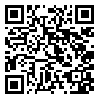Volume 10, Issue 1 (Journal OF Welding Science and Technology 2024)
JWSTI 2024, 10(1): 109-120 |
Back to browse issues page
Download citation:
BibTeX | RIS | EndNote | Medlars | ProCite | Reference Manager | RefWorks
Send citation to:



BibTeX | RIS | EndNote | Medlars | ProCite | Reference Manager | RefWorks
Send citation to:
Maraki M R, Tagimalek H, Yousefieh M, Aghaeifar A, Foorginejad A. Feasibility and determination of the characteristics of the replacement of arc and wire additive manufacturing process based on gas metal arc welding for the construction of bridges and metal structures: Approach of artificial intelligence algorithms. JWSTI 2024; 10 (1) :109-120
URL: http://jwsti.iut.ac.ir/article-1-442-en.html
URL: http://jwsti.iut.ac.ir/article-1-442-en.html
1- Department of Materials Engineering, Birjand University of Technology, Birjand, Iran.
2- Faculty of Mechanical Engineering, Semnan University, Semnan, Iran.
3- Faculty of Materials and Metallurgical Engineering, Semnan University, Semnan, Iran. ,m.yousefieh@semnan.ac.ir
4- Department of Civil Engineering, Payame Noor University, Tehran, Iran.
2- Faculty of Mechanical Engineering, Semnan University, Semnan, Iran.
3- Faculty of Materials and Metallurgical Engineering, Semnan University, Semnan, Iran. ,
4- Department of Civil Engineering, Payame Noor University, Tehran, Iran.
Abstract: (4893 Views)
Society's great and growing demand for buildings and structures has created the need to apply new construction methods to shorten construction times, make buildings lighter, extend their useful life, and make them more earthquake-proof. In the long term, the new methods will lead to structural optimization, increased building performance, and the achievement of optimal operating conditions. New technologies are meeting society's increasing need for special structures more than ever. Additive manufacturing is based on gas metal arc welding as one of the fastest and most cost-effective manufacturing methods for primary metal structures. For this purpose, the three parameters voltage, wire feed speed, and welding speed were considered initial parameters affecting the width and height of the welding flux. To investigate the effects of the process,
16 experiments with input parameters were evaluated. The width and height of the sweat pollen were determined by experimental investigations. Subsequently, the resulting welding geometry is modeled using three numerical modeling methods, including intensive learning machines, relevence vector machine, and fuzzy logic. The comparison between the experimental data and the results of the three generated models shows that fuzzy logic comes closest to the experimental data of the welding geometry of the modeling methods. For example, the test data of the generative fuzzy model resulted in an average error for height and width of 0.667 and 0.5477, respectively, and a root mean square error for height and width of 0.0046 and 0.3, respectively, which expresses the generalization ability and reliability compared to other modeling methods in this process. Finally, a metal pattern of a special structure was produced based on arc and wire additive manufacturing based gas metal arc welding.
Keywords: Arc and wire additive manufacturing, metal structures, artificial intelligence algorithms, gas metal arc welding.
Send email to the article author
| Rights and permissions | |
 |
This work is licensed under a Creative Commons Attribution-NonCommercial 4.0 International License. |






